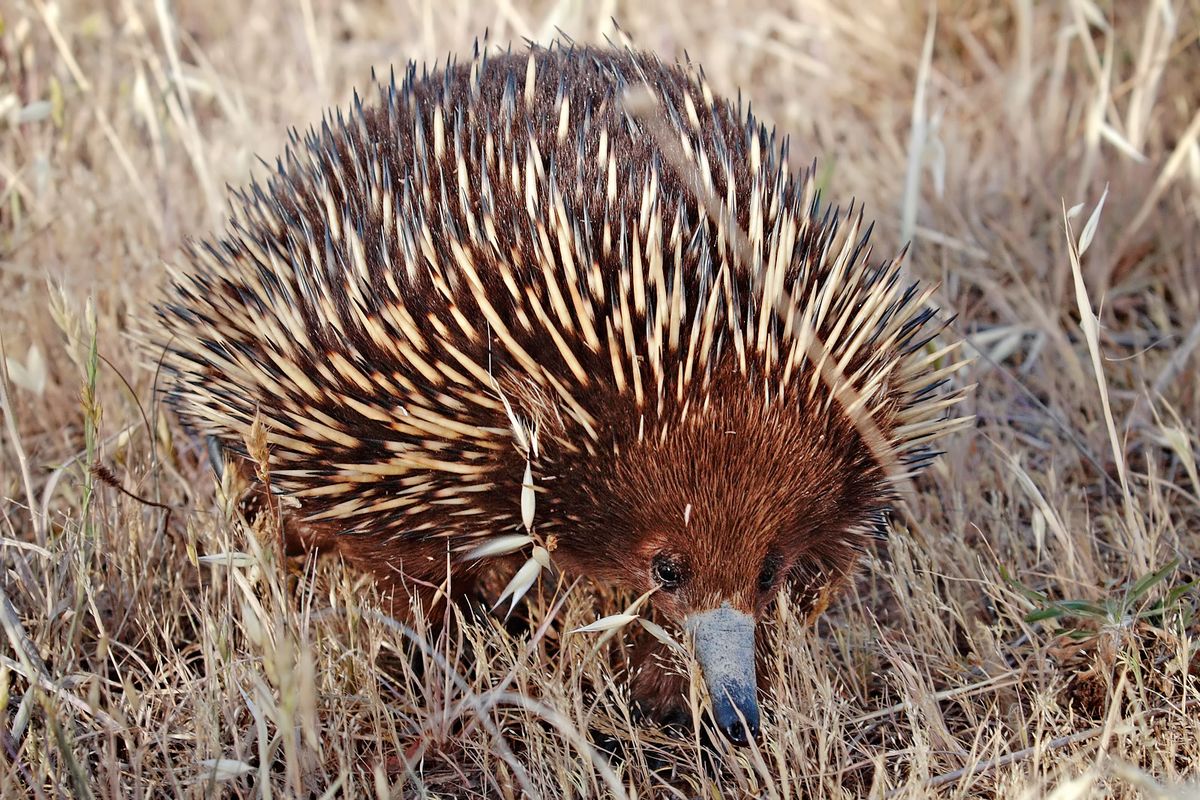
Ever wondered about the quirky creature known as the short-beaked echidna? This spiny mammal, native to Australia and New Guinea, is one of the most unique animals on the planet. Did you know the short-beaked echidna is one of the few egg-laying mammals, called monotremes? With its long snout and sticky tongue, it feasts on ants and termites. Despite its prickly appearance, the echidna is a shy and solitary animal. It has a remarkable ability to dig quickly, using its powerful claws to escape predators. Intrigued yet? Let's dive into 30 fascinating facts about this extraordinary creature that will leave you amazed and wanting to learn more!
Fascinating Features of the Short-beaked Echidna
The short-beaked echidna is a unique creature found in Australia and New Guinea. These spiny mammals are full of surprises. Let's dive into some intriguing facts about them.
-
The short-beaked echidna belongs to a group of egg-laying mammals called monotremes. This group also includes the platypus.
-
Despite their spiky appearance, echidnas are not aggressive. They use their spines primarily for defense.
-
Echidnas have a specialized snout that functions as both a nose and a mouth. This helps them sniff out food and slurp it up.
-
Their diet mainly consists of ants and termites. They use their long, sticky tongues to capture their prey.
-
Echidnas have no teeth. Instead, they grind their food between the bottom of their mouth and their tongue.
Unique Adaptations
Echidnas have evolved some remarkable adaptations to survive in their environments. These adaptations make them one of the most interesting animals on the planet.
-
They can curl into a ball when threatened, with their spines sticking out to deter predators.
-
Echidnas have a low body temperature for a mammal, averaging around 32°C (89.6°F).
-
They are excellent diggers. Their powerful claws allow them to burrow quickly into the ground.
-
Echidnas can enter a state of torpor, where their metabolism slows down significantly. This helps them conserve energy during extreme weather conditions.
-
Their spines are actually modified hairs, made of keratin, the same material as human fingernails.
Reproduction and Lifespan
The reproductive habits and lifespan of echidnas are as unique as the animals themselves. Here are some fascinating details.
-
Female echidnas lay a single, leathery egg directly into a pouch on their belly.
-
The egg hatches in about 10 days, and the baby echidna, called a puggle, stays in the pouch for up to two months.
-
Puggles are born blind and hairless. They rely entirely on their mother for warmth and nourishment.
-
Echidnas can live up to 50 years in captivity, though their lifespan in the wild is typically shorter.
-
Males have a four-headed penis, but only two of the heads are used during mating.
Echidna Behavior
Echidnas exhibit a range of behaviors that help them thrive in their habitats. These behaviors are both fascinating and essential for their survival.
-
They are solitary animals, usually coming together only during the mating season.
-
Echidnas are mostly nocturnal, meaning they are active during the night and rest during the day.
-
They have a keen sense of smell, which they use to locate food and potential mates.
-
Echidnas communicate through a series of grunts and snuffles.
-
They are known to be quite curious and will investigate new objects in their environment.
Conservation and Threats
While echidnas are not currently endangered, they do face several threats that could impact their populations in the future.
-
Habitat loss due to deforestation and urbanization is a significant threat to echidna populations.
-
They are sometimes hunted by humans for their meat and spines.
-
Echidnas are also at risk from introduced predators like foxes and cats.
-
Climate change poses a threat by altering their habitats and food sources.
-
Conservation efforts are in place to protect echidna habitats and educate the public about their importance.
Fun and Quirky Facts
Echidnas have some quirky traits that make them even more endearing. Here are a few fun facts to round out our list.
-
Echidnas are sometimes called "spiny anteaters" because of their diet and appearance.
-
They have a unique way of walking, with their legs positioned on the sides of their body, giving them a waddling gait.
-
Echidnas can swim! They use their snouts as snorkels while paddling with their limbs.
-
They have electroreceptors in their snouts, which help them detect electrical signals from their prey.
-
Despite their small size, echidnas have a large brain relative to their body size, indicating high intelligence.
The Marvel of Short-beaked Echidnas
Short-beaked echidnas are truly fascinating creatures. From their unique way of laying eggs to their impressive digging skills, these spiny mammals have a lot to offer. Their ability to survive in various environments, from forests to deserts, showcases their adaptability. Echidnas' electroreception helps them find food, making them skilled hunters despite their slow pace.
Their solitary nature and long lifespan add to their mystique. Echidnas play a crucial role in their ecosystems by controlling insect populations. Their conservation is vital for maintaining ecological balance.
Learning about echidnas not only broadens our understanding of the animal kingdom but also highlights the importance of preserving such unique species. Next time you think about unusual animals, remember the short-beaked echidna and its remarkable traits. They might be small, but their impact on nature is immense.
Was this page helpful?
Our commitment to delivering trustworthy and engaging content is at the heart of what we do. Each fact on our site is contributed by real users like you, bringing a wealth of diverse insights and information. To ensure the highest standards of accuracy and reliability, our dedicated editors meticulously review each submission. This process guarantees that the facts we share are not only fascinating but also credible. Trust in our commitment to quality and authenticity as you explore and learn with us.
